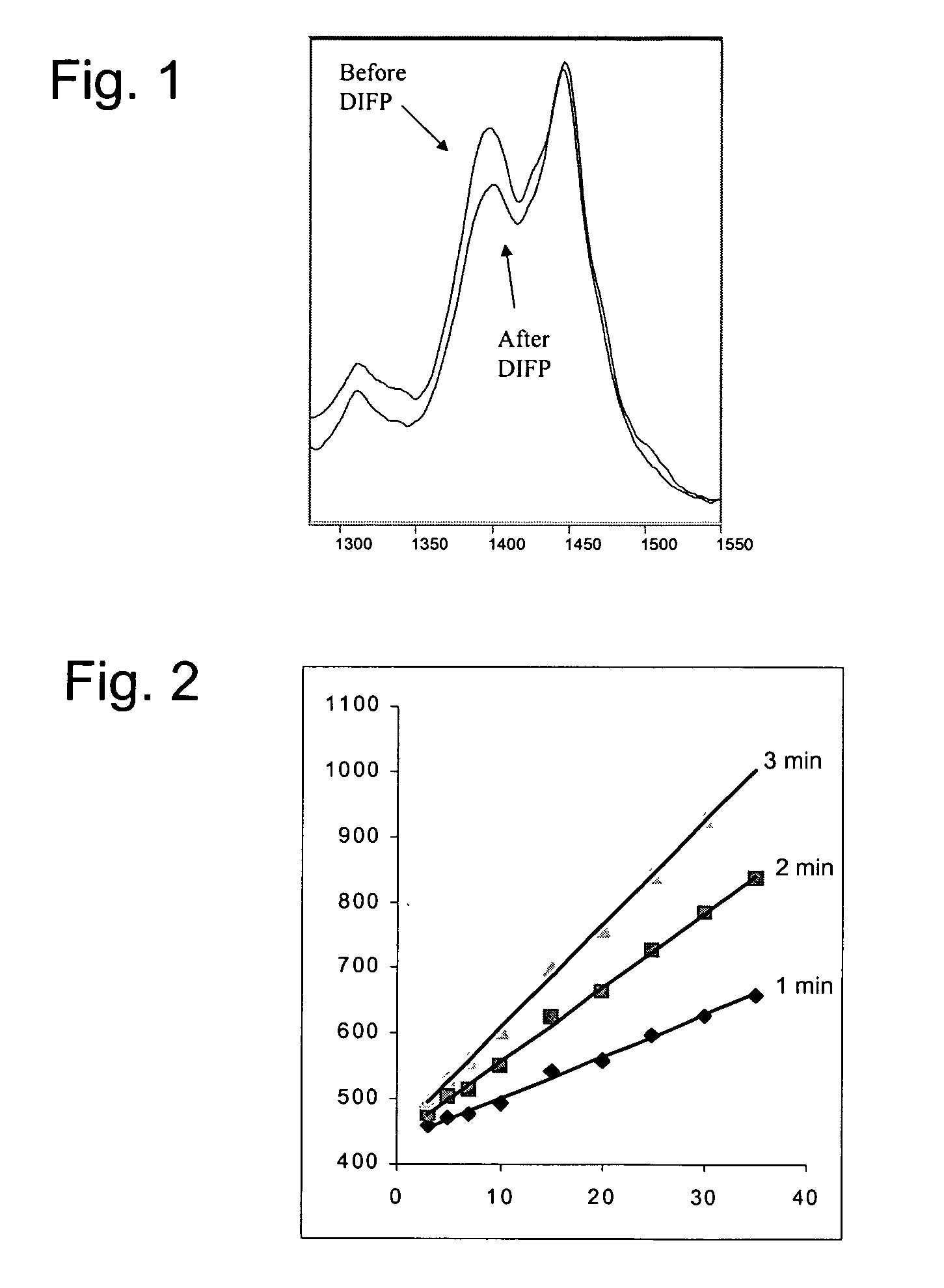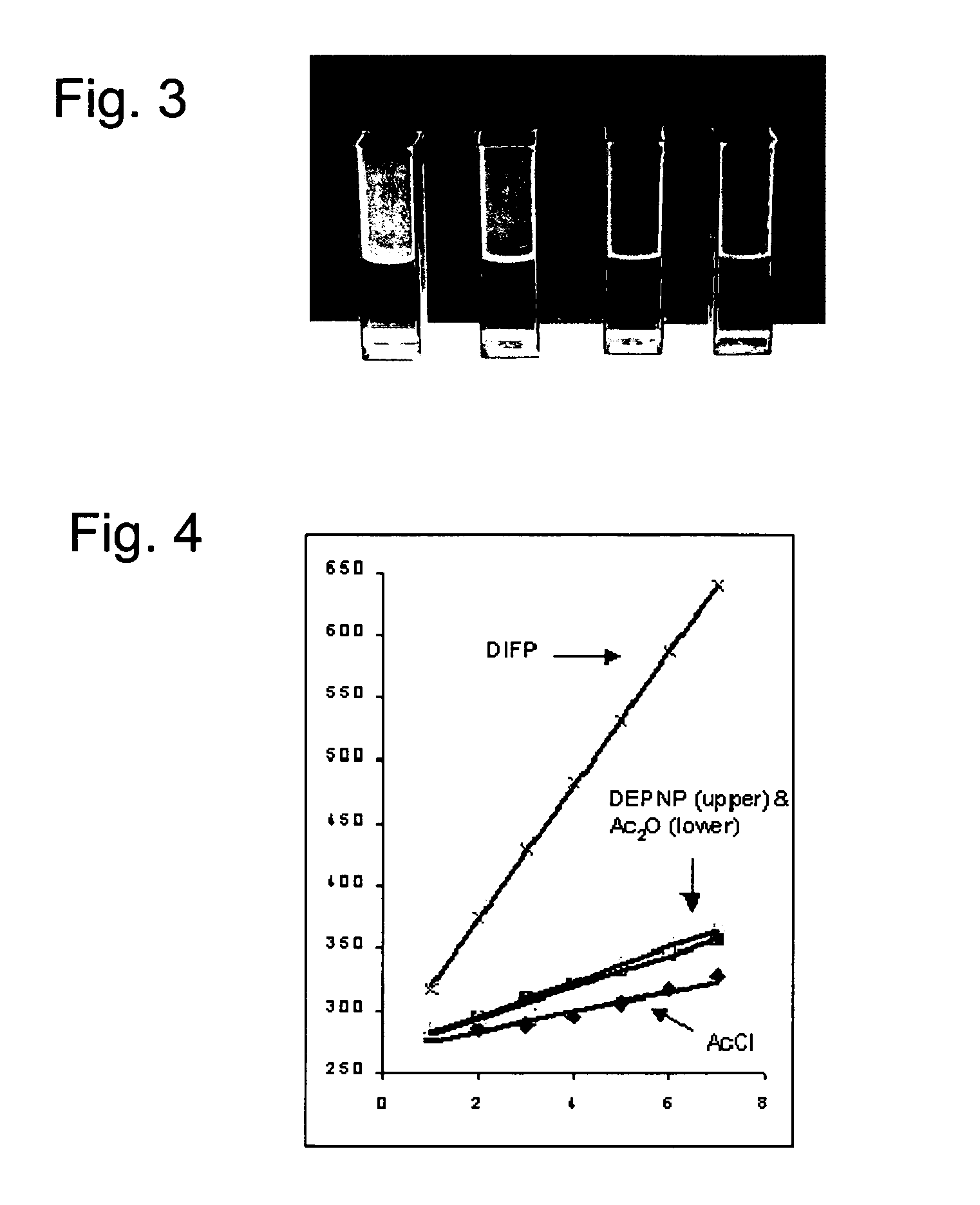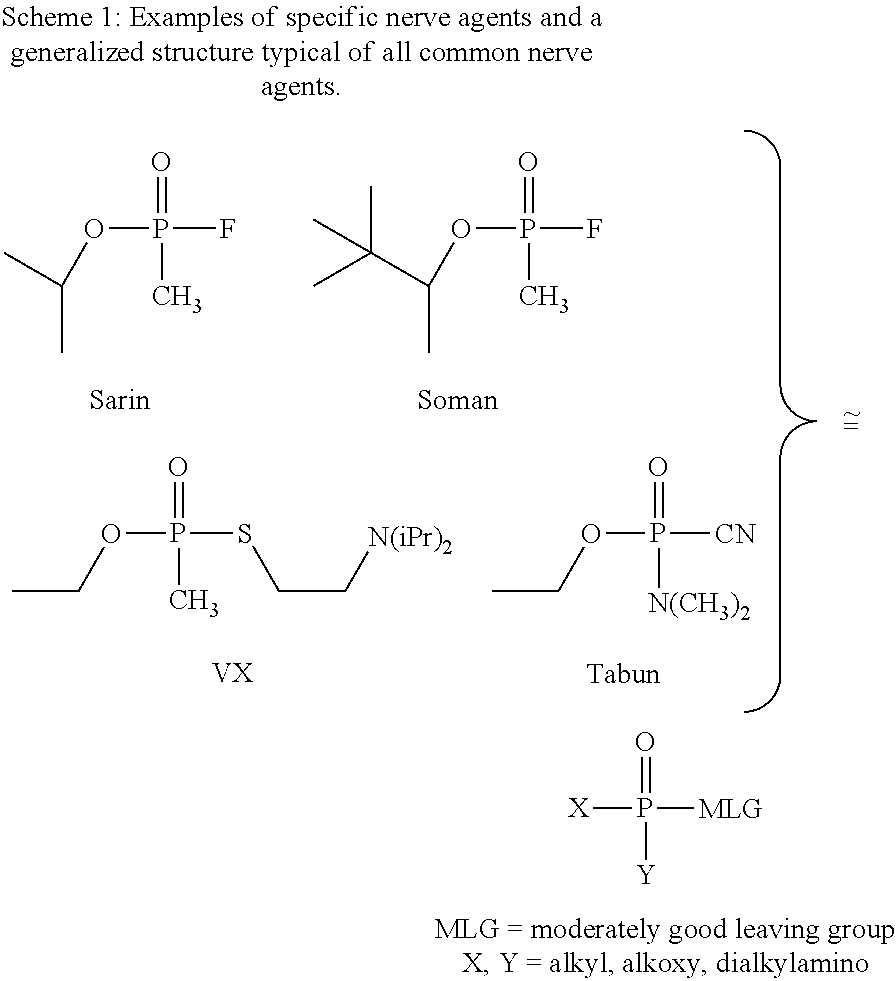Compositions and methods for detecting nerve agents
- Summary
- Abstract
- Description
- Claims
- Application Information
AI Technical Summary
Benefits of technology
Problems solved by technology
Method used
Image
Examples
example 1
Synthesis of a Sensmod Variant of the Nerve Agent Detection System Based on an Azo dye: Compound 12
[0148]
[0149]Ethyl 4-aminobenzoate (3.30 g) was dissolved in aqueous fluoboric acid (48%, 5 mL) and cooled in an ice / water bath, whereupon it partially precipitated. To the rapidly stirred ice-cold solution was added an ice-cooled solution of sodium nitrite (1.52 g) in water (5 mL), in a dropwise fashion, to give a foamy mixture. After addition was complete, stirring was continued for fifteen minutes and then the mixture filtered through a glass frit, and the precipitate washed with small amounts of ice cold water and then ethyl acetate to give crude the tetrafluoroborate salt of ethyl 4-diazoniumbenzoate. A solution of 3-hydroxybenzoic acid (3.04 g) in saturated aqueous sodium bicarbonate (30 mL) was cooled in ace water and the diazonium salt added in portions, giving immediate formation of a bright orange foamy precipitate. After completion of the addition, the cooling bath was remove...
example 2
Synthesis of a Sensmod Variant of the Nerve Agent Detection System Based on an Azo Dye: Compound 15
[0153]
[0154]Scheme 13 illustrates a synthetic pathway for making sensor composition 15 for the Sensmod embodiment of the present invention. To a 25 mL roundbottom flask containing a magnetic stir bar is added m-hydroxybenzoic acid (0.661 g, 4.8 mmol) and aspartic acid dimethyl ester hydrochloride (0.994 g, 5.0 mmol, 1.05 equiv). To the mixture is added freshly distilled (from potassium) THF, followed by distilled (from CaH2) triethylamine (0.8 mL, 5.7 mmol, 1.2 equiv). The flask is sealed with a septum, stirred approximately five minutes, and then the flask unsealed and dicyclohexylcarbodiimide (1.567 g, 7.6 mmol, 1.6 equiv) added in one portion. The flask is resealed and the mixture stirred 15 hours. The mixture is transferred to a separatory funnel with dichloromethane (80 mL) and washed with 1 M hydrochloric acid (2×25 mL), saturated aqueous sodium bicarbonate (2×20 mL) and brine (1...
example 3
Synthesis of a Xanthene Variant of the Sensconj Invention: (Compound 1′)
[0155]
[0156]N,N,N′N′-tetramethyl-9-cyano-9H-xanthene-2,6-diamine (1cA). Pyronin Y (0.90 g, ca. 50% dye content) was dissolved in water (12 mL) by heating, and the supernatant decanted into a 50 mL round bottom flask. To the vigorously stirred solution was added a solution of potassium cyanide (0.90 g) in water (9 mL). The flask was immersed in a 65-70° C. oil bath and stirred for 0.5 hour. The hot solution was then filtered through a sintered glass funnel and the precipitate washed with water to yield a brownish powder (0.42 g) that appeared to be of high purity on the basis of 1H NMR, and which was used directly in the next reaction. 1H NMR (CDCl3): δ7.265 (d, 8.8 Hz, 2H), 6.522 (dd, 8.8 Hz, 2.4 Hz, 2H), 6.395 (d, 2.4 Hz, 2H),
[0157]N,N,N′N′-tetramethyl-2,6-diamino-9H-xanthene-9-carboxylic acid methyl ester (1cB) Sulfuric acid (1.5 mL) was added to methanol (1.5 mL), and the hot mixture was added to a portion o...
PUM
 Login to View More
Login to View More Abstract
Description
Claims
Application Information
 Login to View More
Login to View More - R&D
- Intellectual Property
- Life Sciences
- Materials
- Tech Scout
- Unparalleled Data Quality
- Higher Quality Content
- 60% Fewer Hallucinations
Browse by: Latest US Patents, China's latest patents, Technical Efficacy Thesaurus, Application Domain, Technology Topic, Popular Technical Reports.
© 2025 PatSnap. All rights reserved.Legal|Privacy policy|Modern Slavery Act Transparency Statement|Sitemap|About US| Contact US: help@patsnap.com



